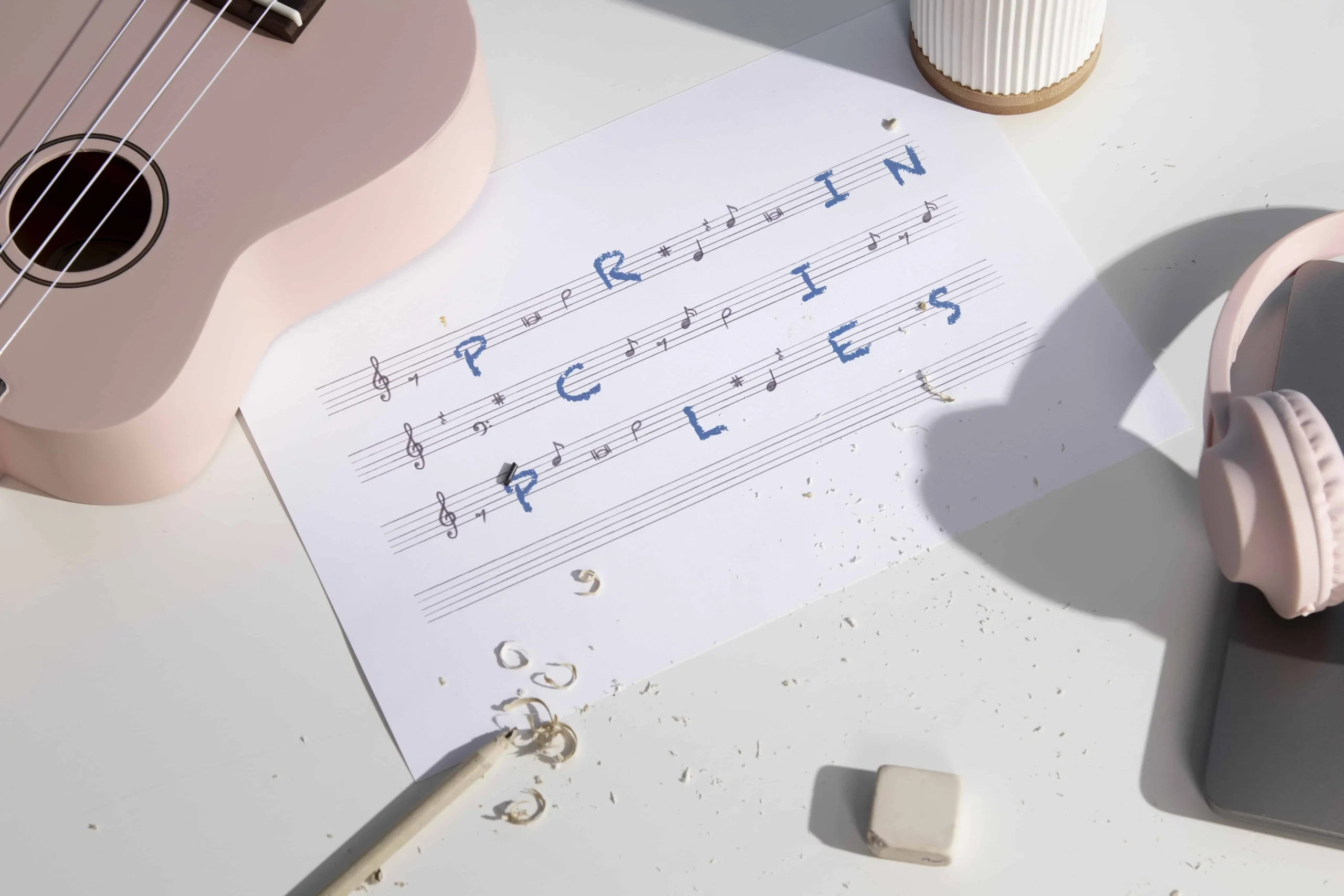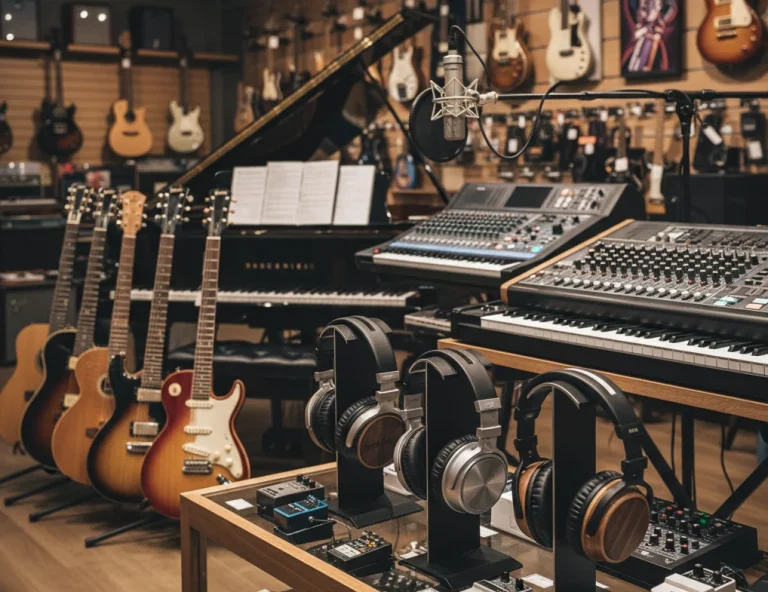All Topics
- Alchemizing Music Concepts for Students
- Artist Spotlight
- artium gift card
- Artium Maestros
- Artium News
- buying guide
- Carnatic Music
- Devotional Music
- Editorials by Ananth Vaidyanathan
- Film Music
- Guitar
- Hindustani Classical Music
- Indian Classical Music
- Indian Folk Music
- Insights
- Instruments
- Karaoke Singing
- Keyboard
- Kids Music
- maestros
- Music Education
- Music for Kids
- Music Industry
- Music Instruments
- Music Legends
- Music Theory
- Music Therapy
- Piano
- piano guide
- Success Stories
- Tamil Film Music
- Telugu Film Music
- Time Theory
- Tools
- Uncategorized
- Vocal Singing
- Vocals
- western classical music
- western music
- Western vocal music
How Do You Improve Your Sight-Reading?
How Do You Improve Your Sight-Reading?

Table of Contents
A skill considered valuable by musicians across all levels is ‘Sight Reading’. The ability to play or sing music on the spot by ‘reading’ the music. This happens without a prior practice of the piece. It provides an opportunity to play countless pieces of music and helps develop your versatility and confidence as a musician. Being able to quickly learn new pieces, play with others and also build your repertoire showcases sight reading as an invaluable skill.
But before that…
If you’re really excited to start your journey in music, start with a free trial lesson today!
What is Sight Reading?
Sight reading is the ability to read musical notations on the go, allowing you to quickly process the notes, rhythms and dynamics in real-time. For beginners, it may seem complicated and hard to understand, but with consistent practice, your skill in reading the notes will improve incrementally.
Sight reading requires some skills to fully support it—reading musical notations, hand-eye coordination, rhythm accuracy and muscle memory. Having all these work together is how you fully take advantage of sight-reading while playing your instrument. It is such a skill that all musicians and vocalists use to their benefit.
Why is Sight Reading Difficult?
While taking piano lessons for beginners, sight reading is slowly taught as it is a very tough aspect of music. It can be very overwhelming as it needs you to process many elements at once – pitch, rhythm, dynamics, articulation, and timing. Trying to juggle all these at once is quite difficult and can take a toll on you. Beginners can struggle as they’re still developing their ability to recognise the notes and strive to improve their accuracy in reading music.
Even though you’re starting, don’t worry. Even experienced musicians sometimes struggle with sight reading. However, to ensure you nail the reading most times, consistent practice and taking it slowly is necessary. Rushing yourself will not help, rather it will hinder your progress for growth. While learning, you must maintain your tempo. Having to juggle many different parts can get tough but no worries, you will improve your sight reading over time.
Read More: The Complete Guide to Learning Piano for All Skill Levels
Tips to Improve Sight Reading
While taking online piano lessons to improve your sight reading, note down the below steps that we, at Artium Academy have collated for you:
- Aim for practising daily. Keeping a specific schedule where you sit down and practice reading will do wonders for your ability to sight read and play your instrument. Try to sight-read new materials, this way you can get a faster understanding of different materials.
- Take it step-by-step. Start with simpler pieces that you are able to play. Slowly mastering these will improve your dexterity and confidence while playing. This will also allow you to improve your sight-reading skills and playing accuracy.
- An important aspect of sight reading is rhythm. Keeping the rhythm in check is of utmost importance. To help you do so, try tapping out the rhythm before actually starting to play. This will help you enhance your accuracy with the notes and rhythms.
- A common habit for musicians is to focus on their instrument, instead of looking ahead at the sheet. This is because they find it easier to focus on the current rhythm. However, you could make mistakes and miss out on the next note. So, learn to look ahead. This will let you read the upcoming note ahead of time and you can then accurately play the notes.
- Practice with a metronome. Staying on time with consistent beats will help you improve your timing. Start with a slower tempo and gradually increase as you become more comfortable and proficient at it.
- Making mistakes is natural, don’t let it hold you back. The next time you practise and make a mistake, keep playing through the entire piece. Don’t stop and restart. This will help to build up your habit of keeping the tempo, as though you’re in a live performance.
- Try not to stick to one genre of music. Diversify when learning how to play using sight reading. This will allow you to get a better understanding of the notes and rhythms across multiple rhythms. Along with genre, change up even the time signatures and key signatures to improve your versatility.
- Try to practise intervals and scales. This will help you understand patterns more clearly in sheet music. Having a hang on these will make reading a music sheet relevantly easier.
- Many books and apps can help you learn how to sight-read efficiently. These will help you gain control of it much faster. The same can be said with the help of online lessons like what we offer at Artium Academy.
- For pianists, it’s better if you practise with each hand separately. This can help you ease into understanding the rhythm and sight reading. Do this slowly and at your pace. Once you feel comfortable, try practising with both hands and see where you go. This will immensely help you improve your concentration and consistency while playing and reading at the same time.
Read More: 10 Tips To Improve Your Sight-Reading On The Piano
Conclusion
Now you see that sight reading is a skill that’s extremely useful and important for every musician. Having this ability properly mastered will take a long time, but with consistent practice, it is possible to do so. It is quite alright if you make mistakes and are frustrated, take your time and practise it step-by-step. Improvement will come gradually but after a period of time, you yourself will be able to see the changes to your abilities.
It’s better to set small, achievable goals at first and take your time to accomplish them. This will let you slowly gain confidence and improve your dexterity while playing your chosen instrument. Slowly but surely, you will be able to notice these incredible changes when reading and playing at the same time.
FAQs
Q. What are some factors of sight reading?
Ans: Multiple factors in sight reading allow a musician to read and play in real time. These include: Note recognition, Rhythm accuracy, Hand-eye-coordination, Tempo control, Pattern recognition, and Muscle memory. By practicing these factors consistently, one can make sight reading easy and intuitive.
Q. What counts as sight reading?
Ans: The ability to sing or play a piece of music by reading the notes for the first time, without prior rehearsal or practice counts as sight reading. This includes – 1) Playing the new composition immediately upon seeing it, 2) Being able to maintain a rhythm and tempo, without stopping, 3) Ability to understand dynamics, articulation and expression marks while performing, 4) Reacting to key and time signatures and accidentals in real-time.
Q. What can help teenagers want to sight read?
Ans: Sight reading is an essential skill that every musician should master. For teenagers, it may seem challenging, but with the following methods, it can be made engaging and rewarding: Make learning fun with interactive challenges & gamification, Including sheet music for the music/songs they enjoy, Introducing digital learning via digital sheet music and notation apps. Encouraging the practice of sight reading in a fun, social setting with peers. Setting small, achievable goals for improving speed, accuracy or playing simple pieces fluently. Encouraging students to sight read in band practice, competitions or school concerts. By making sight reading enjoyable, more teenagers can be motivated to want to learn this.
Q. How to get better at sight reading?
Ans: Here are some effective ways to get better at sight reading – Practice daily, Start with simple pieces, Focus on rhythm first, Use a metronome, Play through mistakes without stopping, and Try different genres, Use sight reading apps. Doing these steps can make one more confident and better at sight reading.
Q. What is sight reading in piano?
Ans: Sight reading in piano refers to the ability to play a piece of music or a composition by reading the notation for the first time without practice. This includes being ambidextrous, identifying patterns to transition smoothly between harmonies, moving fingers efficiently across keys while reading and applying musical phrasing, tempo changes, and articulation as indicated.






